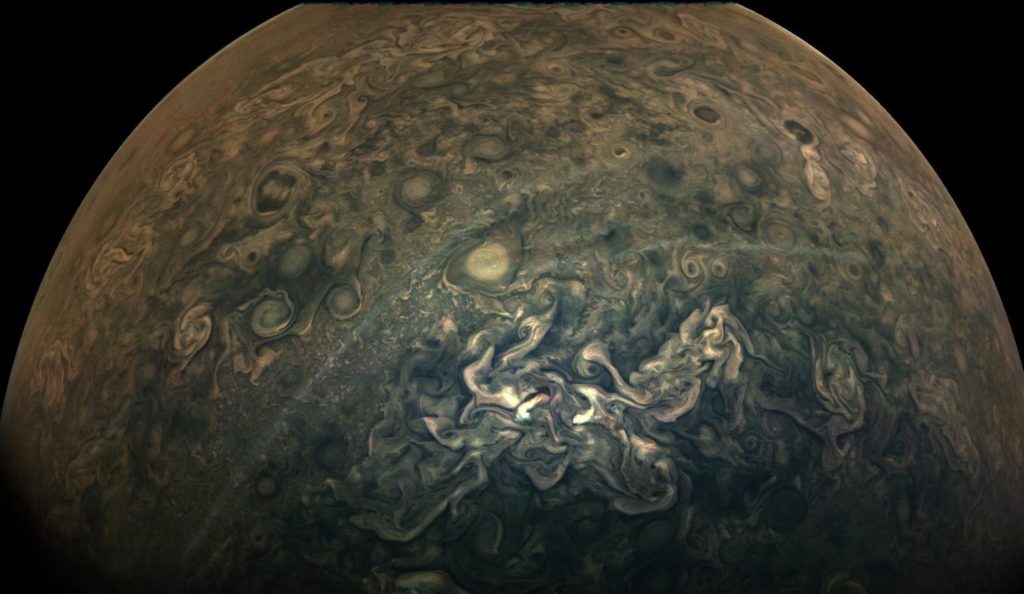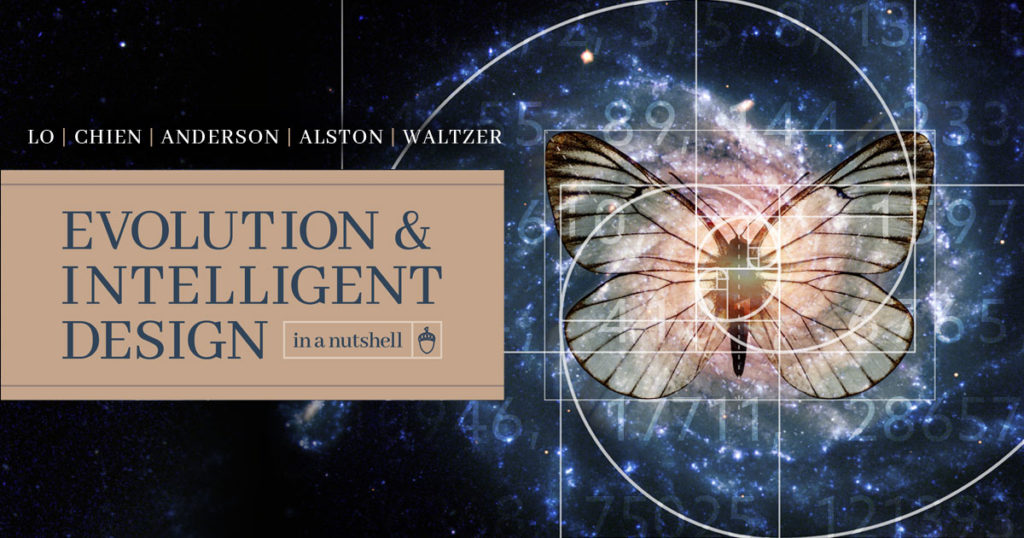 Physics, Earth & Space
Physics, Earth & Space
Book Excerpt: The Big Bang and the Fine-Tuned Universe

Editor’s note: The following is an excerpt from the the new book from Discovery Institute Press, Evolution and Intelligent Design in a Nutshell. Robert A. Alston, PhD, is an electrical engineer with Picatinny Arsenal and a former NASA special projects engineer.
The Kalam cosmological argument, popularized by philosopher William Lane Craig, has two premises and a conclusion:
- Whatever begins to exist has a cause.
- The universe began to exist.
- Therefore, the universe has a cause.
Is the first premise true? “Whatever begins to exist has a cause.” Ask yourself, have you ever seen anything come into existence without a cause? No. And in this case, science and common sense have long agreed — whatever begins to exist does indeed have a cause.
How about the second premise? “The universe began to exist.”
Evidence for a Cosmic Beginning
Scientific discoveries have put to rest the idea that the universe is infinitely old. With Einstein’s theory of general relativity, the insights and observations provided by Lemaître and Hubble, and the discovery of the Cosmic Microwave Background Radiation, along with other evidence, we can reasonably conclude that the universe began to exist. As leading cosmologist Alexander Vilenkin has stated, “With the proof now in place, cosmologists can no longer hide behind the possibility of a past-eternal universe. There is no escape: they have to face the problem of a cosmic beginning.” And Vilenkin, it’s worth noting, is not religious and has looked for ways to avoid the theistic implications of the Big Bang. To his credit, he has refused to deny the powerful evidence for a cosmic beginning.
Since the two premises of the Kalam cosmological argument are correct, we can safely draw the conclusion: “Therefore, the universe has a cause.”

So, what can we infer about the cause of the universe, about what brought it into being? Remember that when the universe began, the space and time of our universe came into being as well, since those too are part of the fabric of our universe, as demonstrated by Einstein’s general theory of relativity. So whatever caused the universe to begin must transcend our universe, existing beyond the limits of the time, matter, and space of our universe. And it must be powerful enough, of course, to cause the entire vast universe to begin.
The cause appears to require another important capacity: the ability to fine-tune.
May the Forces Be with You
Have you ever gone hiking in a forest? If so, more than likely you found yourself surrounded by a still calmness only trees can bring. Birds were possibly singing and squirrels may have been scurrying about. The forest may have felt so peaceful that it appeared as though nature performed this work easily. But the vastness of life surrounding you was being sustained by physical laws so precisely tuned that if they varied from their current strengths even a little, neither you nor the life surrounding you could exist.
With the birth of our universe some 13.8 billion years ago came not only matter and energy but a remarkable set of laws that govern how everything behaves. So delicately balanced are these laws, constants, and initial conditions that small changes would be catastrophic to life. That is, they seem to be fine-tuned to allow for the existence of life. This realization has reshaped the way scientists view the universe.
The universe is governed by four fundamental forces: gravity, electromagnetism, the strong nuclear force, and the weak nuclear force. From the grandest to the smallest scale, these forces govern the way physical objects behave, and the strength of each one appears to be finely calibrated to allow for the possibility of life in the universe.
For instance, if the fundamental force of gravity were somewhat stronger, stars would burn hotter, emitting far more sterilizing X-ray and gamma-ray photons, rendering the surface of a planet like Earth uninhabitable. The stars would also burn much faster. “Typical stars would burn out in a matter of years, not tens of billions of years,” explain cosmologists Geraint Lewis and Luke Barnes, meaning that our sun would burn itself out too quickly, long before life had time to arise and diversify on one of its planets.
What if gravity were somewhat weaker? Stars might not go supernova at all, Lewis and Barnes note, and even if one did “and spilled its material into interstellar space, it would be mainly heavy elements such as silicon and iron, rather than life-supporting oxygen and carbon.” No carbon and oxygen, no life.
The electromagnetic force is also fine-tuned. Lewis and Barnes describe a sophisticated calculation by Fred Adams that takes account of the settings of gravity and electromagnetism together. When it’s plotted on a two-axis graph, the result is a triangle-shaped zone of stability in a vast sea of joint settings that result in unstable stars. “In this figure,” the Fortunate Universe authors explain, “the ‘stable stars’ region takes up less than one part in 1035 of the whole plot.” In other words, the stable-star settings are one in a trillion times a trillion times a hundred billion.
Fortunate Indeed
Or consider the strong nuclear force. “If we nudge the strength of the strong force upwards by just 0.4 percent, stars produce a wealth of carbon, but the route to oxygen is cut off,” Lewis and Barnes note. What if we go in the other direction? “Decreasing the strength of the strong force by a similar 0.4 percent has the opposite effect: all carbon is rapidly transformed into oxygen, providing the universe with plenty of water, but leaving it devoid of carbon.”
The focus on carbon is not arbitrary or due to an unwillingness to imagine other live possibilities. No other element appears remotely capable of replacing carbon as the central element in the buzz of information-processing activity essential to all life. Due to the cooperation of electromagnetism and the strong nuclear force, precise energy levels exist that allow helium atoms to fuse together to make beryllium-8 and then carbon. If these energy levels didn’t coincide, the particles would fly apart before they had time to form carbon.
This finely tuned carbon resonance was predicted by Fred Hoyle, and after his prediction proved correct, he commented, “A commonsense interpretation of the facts suggests that a super-intellect has monkeyed with physics, as well as with chemistry and biology, and that there are no blind forces worth speaking about in nature. The numbers one calculates from the facts seem to me so overwhelming as to put this conclusion almost beyond question.” Hoyle wasn’t religious. In fact, he long resisted the evidence of a cosmic beginning. It seems apparent then that the scientific evidence led him to make the above remark, not religious belief.
This is just a quick and partial survey of how the fundamental forces of nature are fine-tuned to allow for life in the universe.
A Golf Ball Universe Is a Livable Universe
There is something else that had to be fine-tuned to allow for life: the texture of the universe at the Big Bang. Weird but true.
Imagine you are holding a ping-pong ball. Pay close attention to the smoothness of the ball. Now imagine you are holding a golf ball with its uneven, dimpled surface. Now finally, imagine you are holding a jagged, unevenly shaped rock. The universe at its inception had a texture akin to the golf ball, rather than to the ping-pong ball or the jagged rock. That is, it wasn’t extremely smooth like a ping-pong ball, or highly uneven like the jagged rock. Instead it was relatively uniform but with some variation, akin to the surface of a dimpled golf ball.
And a good thing it was. Our golf ball universe is like the baby bear’s porridge that Goldilocks ate — just right. If the dips in the texture of the early universe had been deep beyond a certain narrow limit, there would be massive pockets of gravity. Galactic structures would have clumped together, leading to a bedlam of collisions and explosions lethal to life. Alternately, if the texture of the universe were smooth like a ping-pong ball, there would have been too little gravitational pull to form galaxies and planets quickly enough, and thus again, no life. And the margin for error is extremely tight. For life to be possible in the universe, the degree of uniformity — not too much, not too little — had to be fine-tuned within a very narrow range.
References
- William Lane Craig, “The Kalam Cosmological Argument,” Reasonable Faith, 2015.
- Alexander Vilenkin, Many Worlds in One: The Search for Other Universes (New York: Hill and Wang, 2006), 176. His analysis rules out various attempts to postulate a beginningless universe, including the idea that the universe has expanded and contracted eternally, in an endless series of Big Bangs and Big Crunches. As he and his co-author Audrey Mithani concluded in a 2012 paper, “All the evidence we have says that the universe had a beginning.” Audrey Mithani and Alexander Vilenkin, “Did the Universe Have a Beginning?” arXiv.org, April 20, 2012. See also a New Scientist article about his conclusions by Lisa Grossman, “Why Physicists Can’t Avoid a Creation Event,” New Scientist, January 11, 2012.
- Anil Ananthaswamy, “Is the Universe Fine-Tuned for Life?,” NOVA, PBS Online, March 7, 2012.
- Carl R. Nave, “Fundamental Forces,” HyperPhysics, accessed November 1, 2019.
- Geraint F. Lewis and Luke A. Barnes, A Fortunate Universe: Life in a Finely Tuned Cosmos (Cambridge, UK: Cambridge University Press, 2016), 108. As they further explain, “If gravity were 1035 instead of 1040 times weaker than the strong force, then the window would close completely. Stable stars would not be possible at all” (109).
- Lewis and Barnes, A Fortunate Universe, 108.
- Lewis and Barnes, A Fortunate Universe, 109–10.
- Lewis and Barnes, A Fortunate Universe, 118. They add a caveat in the next paragraph. Due to some complicating factors in calculating these hypothetical changes, “it may take a slightly higher percentage to totally eradicate carbon or oxygen from the universe.” The operative word here, though, is “slightly higher.” Even if this turns out to be the case, the degree of strong-force fine tuning for life will remain striking.
- Fred Hoyle, “The Universe: Past and Present Reflections,” Annual Review of Astronomy and Astrophysics (1982): 16.
- Martin Rees, Just Six Numbers (New York: Basic Books, 2000), 127.
Photo credit: “High-Altitude Hazes on Jupiter,” image via Juno space probe on February 17, 2020, by NASA/JPL/SwRI/MSSS; image processing by Gerald Eichstädt.
